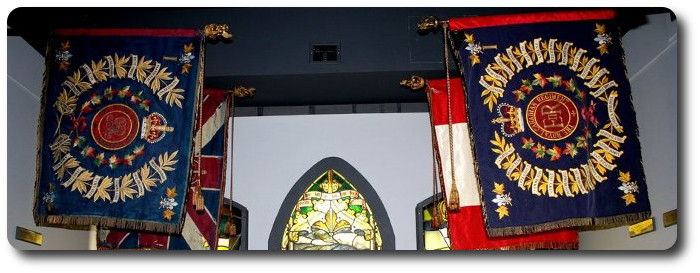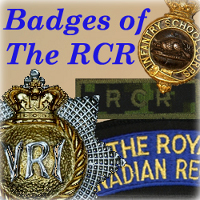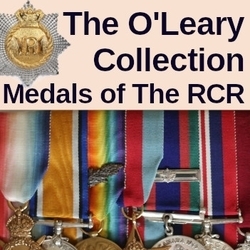
Researching The Royal Canadian Regiment
A Night Out - With Entertainment Yet!
TC 42051, LCol I. A. Hodson ED (ret'd)
Connecting File 2003
This story begins on the good ship MARNIX off the coast of Malta, on 9 July 1943, a day before we hit the beaches at Pachino, Sicily. In our last moments of relaxation, over coffee, a few of us were reminiscing, or discussing the future. Major Billy Pope, the Battalion 2 i/c, predicted that in 48 hours he would have won the DSO or he would be dead. While he was in this mood, I seized the opportunity. In the event of his demise, and being old buddies, I would inherit his duffle coat, and in turn, if I were a casualty, he would have my flashlight, to which he had taken a liking. Agreement was reached.
Some days later, with the 2 i/c's timetable well out of whack, we were marching north, in the dust and heat, having lost contact with the enemy. At last light, we stopped for our 10-minute break. I had just found a comfortable spot in the ditch to stretch out and ease my aching feet when the CO drew alongside in his carrier literally in a cloud of dust. "Ian, get in the back. There's a Bren gun there. Latch on to it" he said. With a clanging of gears and a lurch, we were off. North…alone…no explanation!
What was up? Why me? Where were my buddies Strome and Slim? Were the CO and I off to make contact with the enemy all by our selves? I settled in the back of the carrier trying to get comfortable and decided there was no comfort to be had in those wretched vehicles. It was dark, but a full moon lit the countryside enabling one to see details of a tree or bush at several hundred yards. The moon shining on the column of dust behind us seemed to produce a neon sign pointing at the carrier with the words "aim here." I remembered giving a demonstration in North Africa of the use of field glasses at night, using Bindmans' Zeiss binoculars. Now I was sure every German soldier three miles away could, in the bright moonlight, count the bolts and follow the welding seams on our carrier. I was equally sure that Field Marshall Kasselring, sitting in his office in Rome, could hear us pounding along that road, with the trail of dust lit up in the moonlight giving his gun aimers an admirable target.
Suddenly we stopped. The engine was turned off. The silence was deafening. The CO was peering through the dust off to his right. When the air cleared a little, he drew his pistol, and fired two shots. I cowered down, expecting two shots plus to be returned. There was dead silence. The CO motioned to the driver and we were off again.
After what seemed ages but was probably only a few moments, we repeated the performance. This time I wondered how well it would be received if I popped off some rounds from the Bren gun. I rejected the impulse. We went on and then, at a third stop in the shadows of some trees, came the order: "Ian, get out. Take the Bren gun. I will go back and bring up the Battalion". Should I offer to save him the trouble, let him rest there while I went back for the Battalion? Somehow, I thought the idea was a non-starter.
Off he went leaving me sitting on a stonewall, hugging the Bren gun, without the foggiest idea where I was or the enemy. At that moment, the CO had the only workable map in the Battalion. It was very cold. Every bush for a mile around seemed to get up and move. Voices in the distance were very disturbing. As women's voices were included, I presumed there were Italian farmers in a building not far away. After a good hour, off to the south came a vague sound. It got louder by the minute and sure enough, the Battalion was arriving. In the interval, I thought back to the Long Course at the RMC Kingston, which I attended in January '39. I had been given a précis written by then Brigadier B.L. Montgomery on "Battalion in the Advance to Contact." If only the old boy could have seen us that night!
The battalion stopped, and the C.O. held an "O" Group with several hundred infantrymen listening intently. It seemed the enemy were thought to be on the hills about eleven miles ahead. Were the tanks prepared to support the infantry? At this juncture the 2 i/c joined the "O" Group. He had arrived in a German personnel carrier he had acquired somewhere. Into this he would bung a variety of things lying around which he thought might be useful, such as a compo pack, a blanket, a weapon or ammunition, a crock of issue rum. On occasion the "O" Group rode in it. He listened intently to the dialogue between the C.O. and the armoured commander.
The latter had a problem. He had only enough gas to get to the hills ahead, but then, if he had to fight, he would lose his tanks. The 2 i/c, with visions of the DSO now being his because he would save the day, spoke up. "I have some gas. How much do you need?" There was a moment of silence as the armoured commander did some quick calculations. "About 1,100 gallons, some in the tanks and some immediately behind. How much have you got?" There followed another moment, of difficult silence. In a subdued voice, the answer: "Four jerry cans' (about 20 gallons), One could sense the rustle of wings as the coveted DSO eluded his grasp and beat a nasty retreat across the horizon.
A few moments later the "O" Group was concluded, I rejoined my company and our march northwards continued. My brief respite from my job was over, my "night out" was finished, and while the entertainment was not in a form I would choose again, at least it had been interesting. Later that same day, July 17, 1943, in the outskirts of the small Sicilian town of Valguenera, and in an engagement with a German tank, Major J.H.W.T. Pope was killed. The battalion had made contact. Someone else got the duffel coat.


